#1 Palladium Pendant Buyer in Las Vegas & Henderson
History
Compared to the history of precious metals like gold and silver, palladium’s quite recent, but it is regarded as one of the world’s most desired.
An English chemist named William Hyde Wollaston is credited for its discovery. In mid-1802, a platinum ore from South America was dissolved in aqua regia (a yellow-orange fuming liquid normally a mixture of nitric acid and hydrochloric acid). Upon examining its residue, he found palladium in the ore.
Scientists usually publish their findings upon discovering something. However, Wollaston marketed and sold it anonymously. Suspicious of his behavior, a fellow chemist Richard Chenevix purchased a few samples, which he experimented on; later on, he denounced it as a mere alloy of platinum and mercury. Thus, it was only in 1805 where Wollaston publicly disclosed that he was the one who discovered palladium.
Palladium is named after the asteroid Pallas, which was discovered two months earlier, Pallas is also the epithet of the Greek goddess of wisdom, Athena.
It was mainly used for the production of white gold in jewelry. Many jewelry ribbons were made of palladium, as platinum was considered a tactical resource during World War II. Palladium is naturally white and used in jewelry as a white gold alloy because it no longer needs a rhodium coating.
As gold and platinum prices increased in early 2004, China began using palladium in jewelry production, consuming 37 tons of the metal in 2005. Palladium was used to produce white gold and in some high-quality jewelry, as an alternative to platinum. It was used in the production of gold and silver jewelry as well.
Similar to gold, and lighter than platinum, it can produce white gold and can be formed to leaf-like thinness (100nm). Palladium alloyed with gold has less biological toxicity and rarely causes allergic reactions, but are typically more expensive than gold and nickel.
What Palladium Is
Palladium (denoted by its chemical symbol Pd) is a rare metal with a silvery-white luster. It is related to five other metals; platinum, rhodium, ruthenium, iridium, and osmium and are referred to as PGMs or platinum groups of metals. It has the lowest melting point, the lowest density, and softest among the PGMs.
Where Palladium is Found
PGM deposits are limited in numbers; in the norite belt of the Bushveld Igneous Complex, the most extensive ones are located. It covers these areas:
* the Transvaal Basin in South Africa;
* the Stillwater Complex in Montana, United States;
* the Sudbury Basin and the Thunder Bay District of Ontario, Canada; and
* the Norilsk Complex in Russia
Leading Producers of Palladium
Russia and South Africa are the two leading producers of palladium worldwide. With Russia at 44% and South Africa at 40%, other countries such as Canada at 6% and the United States are at 5%. Recycling and scrap catalytic converters are other sources for palladium.
Characteristics of Palladium
Like its cousin platinum, palladium is also extremely resistant to corrosion and oxidation. It also has very good properties as a catalyst. A one-centimeter cube of palladium can absorb almost a liter (33.814 fl. oz) of hydrogen gas or over 900 times its volume. A unique characteristic of the metal.
Absorption of hydrogen is all that is needed in water electrolysis when using palladium as a cathode. A discovery by Thomas Graham is that when charged with gas palladium, considerably expands in size. It is also resistant to high heat. However, when it is hot and comes into contact with sulfur, it will easily run as zinc.
Palladium production
There are several steps involved in the production process of palladium.
Mining
Palladium is typically found in deposits that are alloyed with platinum and gold. However, deposits of nickel-copper usually found in Canada and South Africa are usually the beginning of the commercial process. Despite the low concentration of palladium in the nickel-copper deposits, its large amounts make the extraction of palladium profitable.
Production
Residues of producing other metals, normally nickel, is where the palladium production starts. Separating these residues is usually attributed to the difference in the chemical composition of the metals.
It usually begins in using aqua regia in dissolving residues. Silver chloride is used if silver is found during the separation process. All other metals are separated by adding other types of substances into the mixture. Other metals are extracted, such as rhodium sulfate, ruthenium, osmium, palladium, and others are categorized for other uses.
Pendants
Pendants are a very beautiful part of one’s jewelry collection and complete other jewelry pieces and give life to an item of otherwise ordinary clothing. Originating from words pendere in Latin and pendre in French, which literally means to hang down, a pendant is typically affixed to a necklace, thus, hanging from it.
Pendants are one of the earliest types of ornaments known to men and A common sight in ancient Egypt, where the early population wore hieroglyph-shaped pendants. Early pendants were made out of different kinds of materials such as stone, shell, pottery, and sometimes made of perishable materials.
Jewelry plays an important role in many cultures, and pendants are no exception. Wearing pendants represent different meanings such as affiliations, protection, identification, given as a recognition, and more.
Types
Amulet
Also known as a talisman, believed to have magical properties, amulets are worn for protection from harm and spiteful spirits or to invite good fortunes. The Middle Eastern talisman called “hamsa” that signifies “Hand of God” is a good example. It is believed to give protection from misfortune and bring happiness, success, good health, and prosperity to its wearer.
Locket
This type is a small hollow oval or a circular-shaped object that can be opened to reveal space, usually for photographs and small mementos.
Medallion
Medal for short, this type is usually around objects typically of celebratory purpose, given as a recognition, award, or for religious blessings. Medals usually have engravings on them to signify an event, to celebrate a person or other insignia of significance.
Crucifix
Commonly seen on Christian religious leaders, this type is worn as a display of religious affiliation or devotion.
Statement Pendants
Stylish and unique statement pendants are popular items amongst the younger generation. They are crafted in different styles and designs that can be simple to a more complex one, designs can be: heart-shaped, stars, or can be animals such as, owl, foxes, cats, dogs, or everyday objects like keys, locks, dice, and so much more. The designs are just limited by one’s imagination.
We BUY Palladium Pendants
Do you have pre-loved palladium pendants you want out of your hands? We’ll be happy to take them from you and even pay you for it! Here at Nevada Coin Mart, we are the #1 buyer of palladium pend, in Las Vegas and Henderson, even in the entire Nevada state!
We offer free in-store evaluation for your piece using state-of-the-art Thermo Scientific Niton X-Ray Spectrometer to accurately analyze and measure precious metal contents in your piece. This will ensure that you get top-dollar for your items.
We are open 365 times a year from 9 am to 6 pm, so come visit us at Nevada Coin Mart® 4065 S. Jones Blvd Las Vegas, NV 89103 or call us up at 702-998-4000.









































